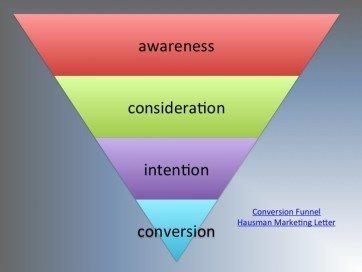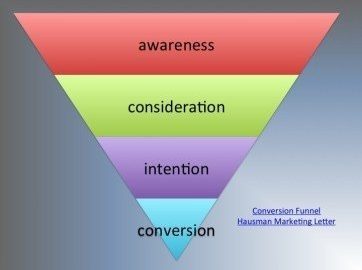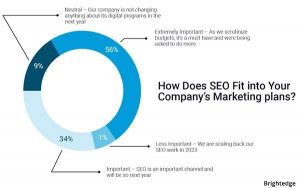 Image by Mediamodifier from Pixabay
Image by Mediamodifier from Pixabay
Cart abandonment is a serious situation of concern for any e-commerce website. Cart abandonment refers to a situation where a customer puts products into their shopping cart then leaves without making a purchase. Many e-commerce businesses experience cart abandonment. Abandonment is a big problem for the business because they spent money, time, and effort getting a prospective customer to the point of purchase, only to lose out at the last moment. By utilizing a few simple strategies your can significantly reduce cart abandonment and improve the financial performance of your website.
To help you understand the potential impact of cart abandonment, take a look at this infographic showing the progression from the beginning of the search process through to making a sale:

At each stage in the process, you incurred expenses, spent company effort crafting specific content for that stage, and carefully nurtured your customer from the initial visit to the conversion stage over time. Now, at the very end of that expensive and time-consuming process, you lost the customer at the very tip of the funnel.
What a waste!
To help you reduce cart abandonment, here are some great tips.
1. Don’t surprise the customer with extra costs
Don’t surprise customers by adding costs to their order during the checkout process. Customers hate that. In fact, according to Baymard Institution’s latest study of reasons for abandonment, 18% of US online shoppers have abandoned a cart because the unexpected costs added at the final stage of the process are too high. The response is often cart abandonment.
Reveal extra costs to the customers clearly and at the beginning of the process as a simple way to solve this problem. This prevents any surprises for consumers when they check out and means they are less likely to abandon their cart.
Be upfront with visitors as soon as they get to your site. If you add shipping costs to the total or if you require a minimum purchase for free shipping, say that upfront before they go filling their shopping cart.
And, as tempting as it is to increase the order size by offering additional purchases, avoid annoying the customer with too many options and offer additional purchase options innocuously, without disturbing the customer at checkout. Some brands, who will remain nameless in this post, offer a series of additional purchase options, each requiring customers to click before advancing to the next screen in the checkout process. Doing this multiple times (or even once if the customer is easily annoyed) results in increased cart abandonment.
Once the customer enters the checkout process, show the subtotal and total in one area of the page to let customers know about extra costs. However, sometimes that’s not possible, for instance, when shipping costs are unknown until you have a shipping address. So; instead, you might add an estimate of costs (clearly marked as an estimate) so customers know the final cost will include extra charges.
Promotional codes create their own problems resulting in cart abandonment. For instance, many customers leave during the checkout process to find a coupon on a third-party coupon website or to check pricing on competitive websites. Highlighting or preloading the coupon into the appropriate field as part of the check-out process ensures customers know the final prices of their cart and reduces cart abandonment as they search out other pricing options. Pre-loading promotional codes also create a sense of urgency among shoppers, as they fear abandoning their cart might result in losing the promotional discount.
Minimizing the distractions and reasons to leave the website during the checkout process decreases the number of potential customers lost and the chances of cart abandonment.
2. Streamline the checkout process
Checkout processes that are too long and complicated for customers turn them off and decrease the likelihood they’ll complete their transactions. Requiring unnecessary information, especially personal information not required to consummate the sale further decreases the change a customer continues through to the end of the buying process. Thus, while you might want to collect birthdates as a means to continue building a relationship with the customer, avoid collecting that as part of the checkout process. You can gather this information at a later stage.
According to Baymard Institution’s latest study of reasons for abandonment, 21% of US online shoppers abandoned a cart because check-out involved a long or complicated checkout process. This means you need to make your check-out process as short as possible. Amazon, for instance, found that eliminating a single click from its check-out increased sales significantly. The improvement drove Amazon to create 1-click checkouts for returning customers.
Simply using auto-fill forms makes the checkout process more streamlined as customers only need to start filling out the form before the fields self-populate with the remaining information necessary.
3. Increase security in the checkout process
Buying products online increases security risks. Customers want to reduce their risks as much as possible, so you reduce cart abandonment when you increase security.
At a minimum, e-commerce sites encrypt information to protect credit card numbers and other sensitive information necessary to complete the transaction. You can further reduce cart abandonment by offering 3rd part payment solutions such as PayPal, especially if your site isn’t well established and trusted by consumers.
Third-party payment sites, which consumers trust, take care of payment processing (for a small fee similar to that of credit card companies) and alleviate customer concerns over the security of their sensitive information.
4. Exit-intent popups
Exit-intent popups are a great way to diffuse customers’ intentions to leave before they complete the checkout process.
Popups work by introducing an offer to a customer when they show an intention to leave the website, which is actually much easier to detect than you might think possible.
When creating an effective, custom popup, you must consider several factors tailored to specific behaviors shown by customers during the shopping event. You want to offer discounts, for instance, related to the products shopped by the customer or put into their shopping cart.
To make popups more effective, use prompt words such as ‘This is for you’ or ‘A little something just for you’. Phrases such as these make customers think they’re getting the best deal and encourage them to return to the checkout process. Using tools like popups instantly minimize cart abandonment.
When crafting your popup, ensure the design is bold enough to grab customers’ attention while at the same time not distracting. The most important thing to remember about exit-intent popups is that they cannot take away from customers’ experience but instead add to it. Popups must convince the customer to complete their transaction in a matter of seconds.
5. Utilize Email Follow Up
Sending follow-up emails that remind customers about products left in their shopping carts is an effective way to reduce cart abandonment.
Implementing a follow-up email requires you to have contact information for the customer so you can send a reminder that you retained their cart so they can easily return to complete the transaction. You might even offer a discount or suggest alternative purchases that might suit the customer better.
To ensure the follow-up email produces the best results for your business, consider factors such as timing, frequency, incentives, and visual appeal.
- Timing is important, so sending an email as soon as possible or within 24 hours help increase the chances of recovering the sale. Brilliance suggests that 50% of potential customers open the first email and 21% click on the buy link contained in the email. Thus, your business has a 21% chance to recover the sale.
- The other factor to consider is the frequency of emails. Studies show sending around 3 emails has the highest performance. This way you’re not bombarding the customers with lots of unwanted emails. By sending more and more emails, the likelihood of the customer opening decreases, and customer piss-off increases.
- Finally, think about your design. The first thing customers notice is the pictures and layout of the email before reading the actual email. Make your email visually appealing to grab customers’ attention as they are more likely to complete their transactions and reduce cart abandonment for your company.
Cart abandonment exists for all e-commerce businesses, so you never reduce cart abandonment to 0.
But, you can improve performance, achieving a higher conversion rate by using some of these strategies. Recognize that a small decline in cart abandonment increases sales and quickly boosts your conversions.
Most importantly, as you increase your conversions, you create customers who are valuable for your business as studies show selling to an existing customer is 5X more likely than finding new customers. By ensuring a positive customer experience you create a steady stream of income for your business.
Digital & Social Articles on Business 2 Community
(40)
Report Post



